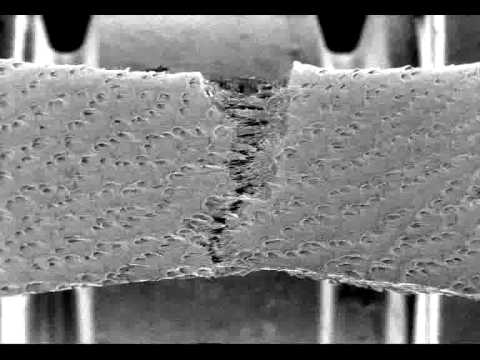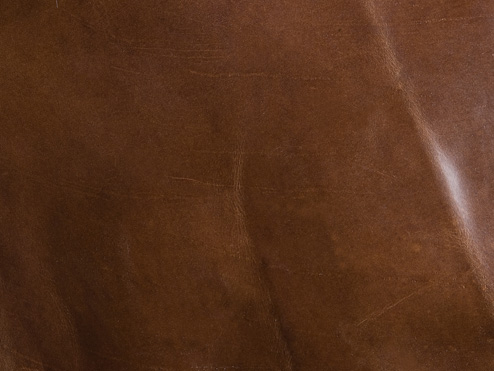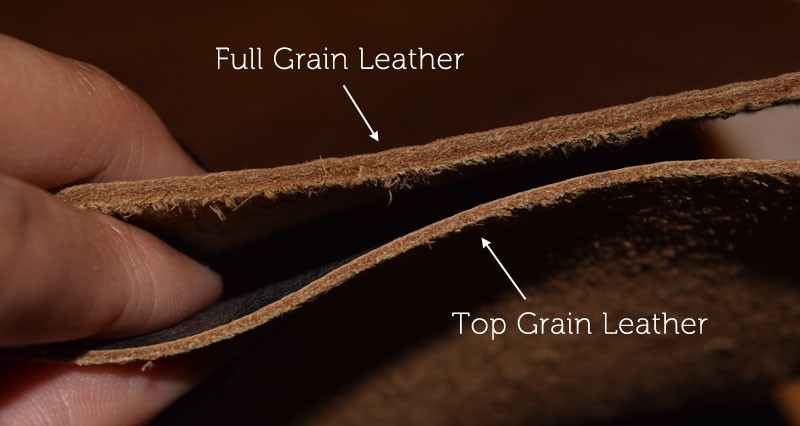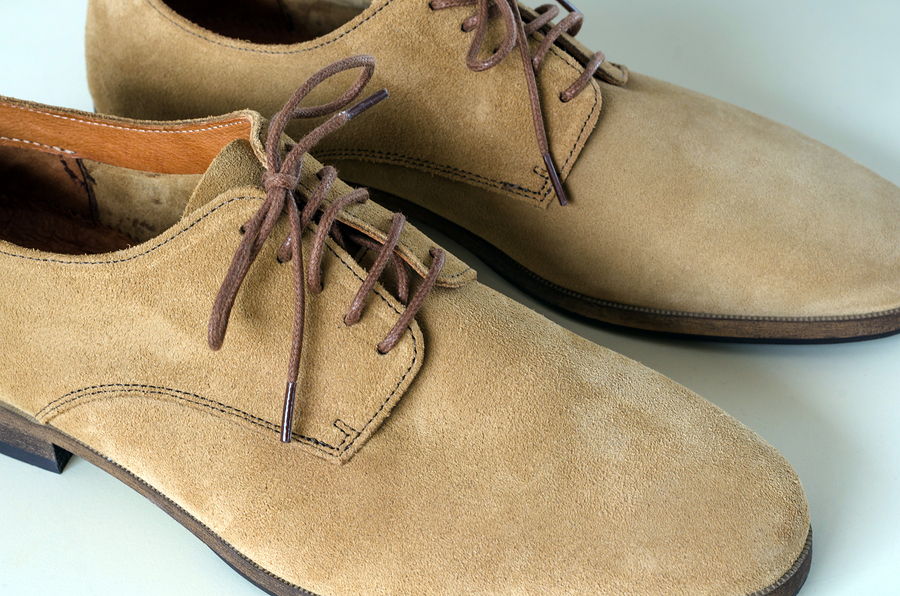Identify Leather Types: Leather Cuts
Posted by Leather Milk Customer Orders on Oct 19th 2016
How can I tell what kind of leather I have? How can I know the best treatment for my leather? Does all leather behave the same way, or does each kind require a different type of treatment?
These are burning questions in the hearts of leather aficionados everywhere. Today, we're going to dispel this mystery, and get to the juicy details about how you can harness your own Sherlockian powers of observation to identify and diagnose proper leather care for your own valued leather.
This is the second of a five-part series exploring leather 101. In the first four parts, we will be exploring the different styles of leather and how it is made, assembling a catalog of various leather types. Our fifth blog will expose useful tricks to allow you to distinguish between these different types of leather, so that you can be better prepared to know your own unique leather, and know the best way to treat it. Last blog, we discussed how to identify tanned leather types. Today, we'll be talking about the different ways leather is cut. Following this, we will explore leather finishes and animal breeds, followed by Leather Type Identification Techniques. Hope you enjoy!
Identifying Leather Cuts
So you want to learn about leather cuts? Good form, aficionado. The different types of leather cuts are an important thing to know when you're shopping for new leather, or trying to figure out how to treat leather you already own. Basically, the whole concept comes down to this: leather comes in layers. While leather is in production, companies often cut or sand away portions of these layers for various reasons, and the type of cut they perform determines how great your leather is going to be. There are three basic types of leather cuts: Full Grain, Top Grain, and Genuine Leather. There's also a fourth category called bonded leather, although this type is hardly worth the name, as this leather is quite literally made from shredded chunks of leather being glued back together to make a fairly synthetic material with a leather-like appearance It's technically leather. But it's not really leather-leather. Here: a picture for you!

Bonded leather can often look like real leather, but it carries all the hallmarks of a synthetic material: plastic-like scent, smooth and stretchable, uniform aesthetic. The edges of bonded and synthetic leather also tend to be very smooth, instead of natural leather's rougher texture. This material is also not very durable, and prone to flaking easily. If you're getting ready to purchase leather that matches any of these criteria, make sure you check with the manufacturer first so you know what you are buying.
Back to our more natural leather varieties. Let's take this topic a little bit deeper. What is it exactly that's being cut when leather is being converted to top grain or genuine? Are all layers of leather the same?
No.

Behold! The fiber matrix! This is what your leather looks like at a microscopic level. See those tiny tendrils snapping at the center? Those are the fibers that weave your leather together and give it form. This photo is actually taken from a tensile strength test being performed on leather. Don't worry - it takes a whole lot of power to get this done. According to Howard Monroe Raymond in his book Modern Shop Practice, the breaking tensile strength of leather belts can vary from 3,000 to 5,000 pounds per square inch. For reference, 5000 psi is the minimum tensile strength required for lifelines by OSHA (Occupational Safety and Health Administration) federal regulations. What does that mean? If you've got tough leather, you can depend on it with your life, boss.
So why is some leather tougher than others? That has everything to do with how leather is layered. Observe.

This picture probably looks like the world's tallest beaver dam to you, doesn't it? Heck, I'll admit it. It looks a lot like a really decked-out beaver dam. But it's so much more.
Remember the fibers and layers we just talked about? This is how they organize: from a tender suede underbelly, all the way to the tough, interweaving fibers of the surface grain. At the lowest level of your hide, these fibers are flattened out, moving horizontally and weaving together less tightly than the fibers layering above. More porous and soft, while offering less durability and protection, this layer is called genuine leather (which is most often converted into suede). Just beneath this bramble you will find the flesh, which possesses a soft, lovely texture, sanded down when preparing suede material (conversely, nubuck leaves the flesh unabraded and instead sands down the upper suede surface). You can read more about Suede and its counterpart Nubuck here.
Sitting on top of genuine leather, we have top grain leather. Here the fibers start to angle upwards in a more vertical direction, at about a 45° angle. The fibers also start to weave more tightly together, giving the leather a tougher quality than the genuine layer below it.
At the surface of the leather is full grain. This is the part of the hide that's of the highest quality, and tougher than any other layer below it. Fibers weave in dense forests of patterns, bonding in tight, interlocking fashions that give the leather maximum tensile strength. It should also be noted that this layer of leather is also the most natural, for it was at the very surface of the hide on its animal breed while it was still alive. Any scars, patterns, birthmarks or other characteristics that were present on the animal are present on full grain leather. This can be a plus or a minus, depending on your personal taste. You can read more about these characteristics here.

It should be noted that when I say "layer," I do not mean to suggest there are literal, isolated layers inside of natural leather. Rather, we refer to layers to describe the density and toughness of the fibers, which are strongest at the surface and weaken the further we penetrate. Artificial layers are created, however, when the leather is split, or cut.
Making the Leather Cut
So we've identified the differences between the layers in your leather. Many manufacturers like to cut and sand layers of leather off because a different layer appeals to their taste more than others. Saddleback Leather likes full grain for its toughness, and leaves the leather just like it is, embracing its exotic qualities. Other manufacturers like top grain for its more even appearance, free from the scarring and markings you'd find on full grain. Still other leathercrafters enjoy suede for its soft touch and sophisticated style. There's no right or wrong way to split hide. So I'm just going to break the unique qualities of each cut down for you.
Full Grain
- Distinctive, natural markings and patterns, derived from the animal breed's own unique history and experiences. Stong, grainy, natural aesthetic.
- Scent is most preserved in full grain leather; musty and earthy with age.
- Somewhat scratch resistant, but scratches that take are harder to get out without conditioner.
- Slower absorption, due to smaller pores and greater levels of protection. Will take a short time for substances to fully absorb through the surface.
- Somewhat rougher texture than top grain and suede. More substance when flexed, and less pliable. Minimal elasticity (cannot be stretched easily), but still supple.

Top Grain
- Lacks full grain's natural markings, but still fairly distinctive. Pores are much more visible, and the leather retains a grainy, natural aesthetic.
- Natural scents are less preserved in top grain, but still strong. Musty qualities a little more muted.
- Can be scratched more easily, though scratches will often be less visible.
- Faster absorption than full grain, owing to more exposed pores. However, it has a slower absorption rate than suede, and is more easily treated than suede.
- Softer texture than full grain, rougher texture than suede. More flexible and supple texture than full grain, with strong, if inferior elasticity. This hide balances tenderness and strength between full grain and suede.

Suede
- Lacks the distinctiveness and leather-like appearance of full grain and top grain, but possesses its own velvety aesthetic. Pores have maximum visibility.
- Contains a more subtle natural scent, less potent than other cuts, but teasing.
- Scratches pretty easily, with minimal effect - can usually just be brushed or rubbed away.
- Almost immediate absorption, and substances that absorb are very difficult to remove. Recommended for indoor leather.
- Lovely, velvety texture, and soft to the touch. Will likely have a fuzzy, napped surface. Very flexible and pliable, with less substance, but luxuriously gentle feel.
Count on Variation
If you are still in doubt about your leather’s type after checking for these qualities in your leather, it is also a good idea to ask the leather’s manufacturer. Take note that the leather type attributes identified in this post might be enhanced or diminished by other ways the leather is prepared. For example, your vegetable tanned, top grain leather may possess all the porousness natural qualities we've talked about, but beneath a coat of pigmented finish, you'd never know it was vegetable tanned! In the following posts of this series, I will discuss factors like the leather's animal breed, describing how these changes may affect your leather’s design. Don’t forget to treat your leather with Leather Care Liniment to keep it healthy and strong!
Tune in next time to learn more handy Leather Identification 101: a crash-course on leather finish, empowering you with all the know-how you need to give your leather the love and affection it deserves.
Cheers, leather aficionados & friends!

